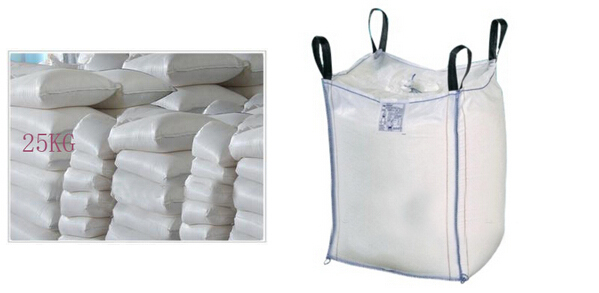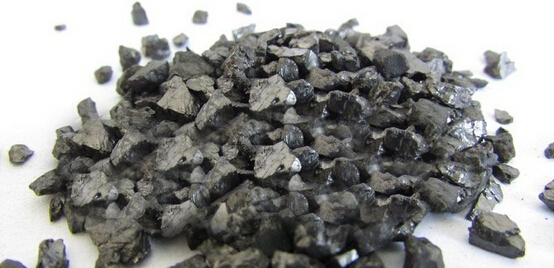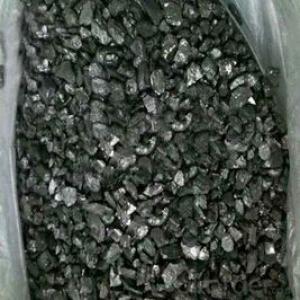Recarburizer updated material for iron melting foundry
- Loading Port:
- Dalian
- Payment Terms:
- TT OR LC
- Min Order Qty:
- 10 m.t
- Supply Capability:
- 500000 m.t/month
OKorder Service Pledge
OKorder Financial Service
You Might Also Like
Specifications:
The chemical composition is pure: high carbon, low sulfur, tiny nitrogen, slightly less harmful impurity.
The carburant has excellent features of high carbon, low sulfur, low nitrogen and little impurity. This product is used in casting, can significantly increase the amount of scrap steel, reduce the pig iron dosage or do not use pig iron. At present most recarburizer are suitable for electric furnace smelting, also have a few special recarburizer with fast absorption rate is used in cupola furnace.
Data Sheet:
Product Num. | Fix carbon (mix) | Sulphur (max) | Ash (max) | Volatile Matter(max) | Moisture (max) | Grain size
| Nitrogen (max) |
GH-CA-01 | 99.00% | 0.03% | 0.50% | 0.50% | 0.50% | 0.15-5mm | 300ppm |
GH-CA-02 | 98.50% | 0.06% | 0.80% | 0.70% | 0.50% | 0.15-5mm | 300ppm |


- Q:What's the difference between coal and carbon?
- Coke, too, is quite different from coal in physical properties.
- Q:I want to make a rectangular round bar for bearing. What carbon fiber and carbon fiber should be used? How should I do it? What kind of machine does it use to dry it?
- Not really. Carbon fiber is only a reinforcing material, similar to glass fiber, without cohesive force.In general, the carbon fiber cloth is to be made of pre impregnated fabric by wet or melting method, and then cut, then laid or rolled to form the embryo according to the shape to be made. Finally, the mold is heated and pressurized and shaped.Plastic molding may be referred to
- Q:Appearance, hardness, electrical conductivity, use of carbon 60
- C60 is a molecule composed of 60 carbon atoms in the molecule, it is like football, so also known as footballene (C60. This material is composed of C60 molecules, rather than by the atoms.) C60 is simply made of carbon atoms with stable molecules, it has 60 vertices and 32 sides. The 12 is Pentagon and 20 hexagon. Its molecular weight is about 720.
- Q:What is methane?
- Methane is a colorless and odorless gas that is the primary component of natural gas. It is formed from the decay of organic matter and is a potent greenhouse gas.
- Q:What is the structure of carbon-based polymers?
- Carbon-based polymers have a repeating chain-like structure, where carbon atoms are bonded together to form the backbone of the polymer. These carbon atoms are typically covalently bonded to other atoms or groups of atoms, such as hydrogen, oxygen, nitrogen, or halogens. The arrangement of these atoms and their connectivity determines the properties of the polymer. In addition to the carbon backbone, carbon-based polymers often contain functional groups, which are specific combinations of atoms that can impart unique chemical properties to the polymer. These functional groups can be attached to the carbon backbone at various points along the chain, introducing chemical diversity and modifying the polymer's behavior. The repeating units in carbon-based polymers, known as monomers, can vary in size and complexity. For example, simple hydrocarbons like ethylene can polymerize to form polyethylene, which consists of a long chain of carbon atoms with hydrogen atoms attached. On the other hand, more complex monomers, such as acrylonitrile or styrene, can be used to create polymers like polyacrylonitrile or polystyrene, respectively. These polymers incorporate additional atoms or functional groups, leading to different properties and applications. Overall, the structure of carbon-based polymers is highly diverse and can be tailored to meet specific requirements, making them versatile materials used in a wide range of industries, including plastics, textiles, and electronics.
- Q:What are the applications of graphite in industry?
- Graphite has numerous applications in various industries due to its unique properties. Here are some of the key applications of graphite in industry: 1. Lubricants: Graphite is widely used as a solid lubricant in industry due to its low friction coefficient. It is commonly used in applications where high temperatures and extreme pressures are present, such as in the automotive, aerospace, and heavy machinery industries. 2. Refractories: Graphite is highly resistant to heat and chemical reactions, making it an ideal material for manufacturing refractory products. Its use in refractories helps to line furnaces, crucibles, and other high-temperature equipment used in metal production, glass manufacturing, and chemical processing. 3. Electrical industry: Graphite is an excellent conductor of electricity, and it is widely used in the electrical industry. It is used to manufacture electrodes, brushes, and contacts for electrical motors, generators, and batteries. Graphite is also used as a component in various electrical applications, such as electrical discharge machining (EDM) and as a conductive filler in conductive paints and coatings. 4. Foundry industry: Graphite is used as a mold and core material in the foundry industry. Its high thermal conductivity and ability to withstand high temperatures make it suitable for casting applications. Graphite molds can be used for various metal casting processes, including sand casting, investment casting, and continuous casting. 5. Chemical industry: Graphite is used in the chemical industry due to its resistance to corrosion and high temperatures. It is used in the manufacture of chemical equipment, such as heat exchangers, reactors, and pipes, where it can withstand aggressive chemical environments. 6. Nuclear industry: Graphite is utilized in the nuclear industry as a moderator in nuclear reactors. Its ability to slow down neutrons allows for controlled nuclear fission reactions. Additionally, graphite is also used as a structural material in some types of nuclear reactors. 7. Composite materials: Graphite is commonly used as a reinforcement material in the production of composite materials. Graphite fibers or sheets are combined with other materials, such as resins or metals, to create lightweight and high-strength composites used in aerospace, automotive, and sporting goods industries. Overall, graphite's unique properties, including its high thermal conductivity, electrical conductivity, lubricity, and chemical inertness, make it a versatile material with applications in various industries.
- Q:What are the properties of activated carbon?
- Activated carbon, also known as activated charcoal, possesses several unique properties that make it highly versatile and useful in various applications. 1. Adsorption: One of the most significant properties of activated carbon is its high adsorptive capacity. It has a vast internal surface area due to its porous structure, which allows it to effectively adsorb molecules, ions, and impurities from gases, liquids, and solids. This adsorption capability makes it ideal for purification purposes, such as water and air filtration, as well as in the removal of toxins and pollutants from industrial processes. 2. Porosity: Activated carbon has a highly porous structure with a network of interconnected pores. This porosity provides a large surface area, enabling it to trap a significant amount of contaminants. The pores can be classified into three types: micropores (less than 2 nm), mesopores (2-50 nm), and macropores (greater than 50 nm), each contributing to its adsorption capacity. 3. Chemical Stability: Activated carbon exhibits excellent chemical stability, making it resistant to degradation and breakdown when exposed to various chemicals or environments. This property allows it to maintain its adsorption capacity over a long period and under harsh conditions, ensuring its efficiency and longevity in different applications. 4. Selectivity: Activated carbon can be tailored to exhibit selectivity towards specific substances by modifying its surface properties. Through various activation processes, such as physical or chemical treatments, the surface chemistry of activated carbon can be altered to enhance its affinity for certain molecules or contaminants, while reducing its affinity for others. This selectivity makes it an effective material for specific applications, such as removing specific pollutants or capturing desired compounds. 5. Regenerability: Another advantageous property of activated carbon is its regenerability. After reaching its adsorption capacity, it can be regenerated by heating or washing with appropriate solvents, allowing it to be reused multiple times before replacement. This regenerability not only reduces the operational costs but also contributes to its sustainability and eco-friendliness. 6. Low Density: Activated carbon has a relatively low density, making it lightweight and easy to handle. This property enables its use in various systems and devices without adding excessive weight or bulk. 7. Thermal Stability: Activated carbon possesses high thermal stability, allowing it to withstand high temperatures without significant degradation. This property makes it suitable for applications involving high-temperature processes, such as gas purification or catalytic reactions. Overall, the properties of activated carbon, including its adsorption capacity, porosity, chemical stability, selectivity, regenerability, low density, and thermal stability, make it a versatile material widely used in water and air purification, gas separation, chemical processing, pharmaceuticals, and many other industries.
- Q:Is the hardness or softness of the steel with higher carbon content?
- Carbon is the major element in determining the properties of steel, because changes in carbon content lead directly to changes in crystal structure.
- Q:What are the economic impacts of carbon emissions?
- The economic impacts of carbon emissions are significant and wide-ranging. Carbon emissions, primarily from the burning of fossil fuels, contribute to climate change and global warming. These changes in the climate have a direct impact on various economic sectors and can lead to both short-term and long-term economic consequences. One of the most notable economic impacts of carbon emissions is the cost of dealing with the effects of climate change. Extreme weather events, such as hurricanes, floods, and droughts, become more frequent and intense as a result of carbon emissions. These events can cause extensive damage to infrastructure, homes, and businesses, leading to significant economic losses. For example, in 2017, the United States experienced a record-breaking hurricane season, with hurricanes Harvey, Irma, and Maria causing an estimated $265 billion in damages. Moreover, carbon emissions also affect agricultural productivity. Climate change alters temperature and precipitation patterns, which can disrupt crop production and decrease yields. This, in turn, affects food prices and availability, impacting both consumers and farmers. Additionally, carbon emissions contribute to the acidification of oceans, which can harm marine ecosystems and disrupt fisheries, leading to economic losses for fishing communities. Furthermore, carbon emissions have implications for public health, which can result in economic burdens. Air pollution caused by carbon emissions can lead to respiratory and cardiovascular illnesses, increasing healthcare costs and reducing workforce productivity. In addition, extreme heatwaves, exacerbated by carbon emissions, can have a detrimental impact on worker productivity and labor capacity, affecting economic output. To mitigate the economic impacts of carbon emissions, many countries have implemented policies and regulations to reduce greenhouse gas emissions. These policies often include carbon pricing mechanisms, such as carbon taxes or cap-and-trade systems, which aim to incentivize the transition to cleaner energy sources and reduce carbon emissions. While these policies may have short-term economic costs, they can also create opportunities for innovation and the development of green technologies, which can lead to long-term economic benefits. In conclusion, the economic impacts of carbon emissions are significant and multifaceted. From the costs of dealing with climate-related disasters to the effects on agriculture, public health, and productivity, carbon emissions have far-reaching consequences. Addressing these impacts through the implementation of effective climate policies is crucial to mitigate the economic risks and foster a sustainable and resilient economy.
- Q:How does carbon cycle through the environment?
- The carbon cycle is a natural process through which carbon is constantly recycled and exchanged between the atmosphere, land, and ocean. It begins with carbon dioxide (CO2) being absorbed by plants through photosynthesis, converting it into organic compounds. These plants are then consumed by animals, transferring carbon up the food chain. When plants and animals die, their organic matter decomposes, releasing carbon back into the atmosphere as CO2. Additionally, some carbon is stored in the form of fossil fuels, such as coal and oil, which are released through human activities like burning fossil fuels and deforestation. Ultimately, carbon is continually cycled through the environment, balancing the levels of CO2 in the atmosphere and supporting life on Earth.
1. Manufacturer Overview |
|
|---|---|
| Location | |
| Year Established | |
| Annual Output Value | |
| Main Markets | |
| Company Certifications | |
2. Manufacturer Certificates |
|
|---|---|
| a) Certification Name | |
| Range | |
| Reference | |
| Validity Period | |
3. Manufacturer Capability |
|
|---|---|
| a)Trade Capacity | |
| Nearest Port | |
| Export Percentage | |
| No.of Employees in Trade Department | |
| Language Spoken: | |
| b)Factory Information | |
| Factory Size: | |
| No. of Production Lines | |
| Contract Manufacturing | |
| Product Price Range | |
Send your message to us
Recarburizer updated material for iron melting foundry
- Loading Port:
- Dalian
- Payment Terms:
- TT OR LC
- Min Order Qty:
- 10 m.t
- Supply Capability:
- 500000 m.t/month
OKorder Service Pledge
OKorder Financial Service
Similar products
New products
Hot products
Related keywords
































